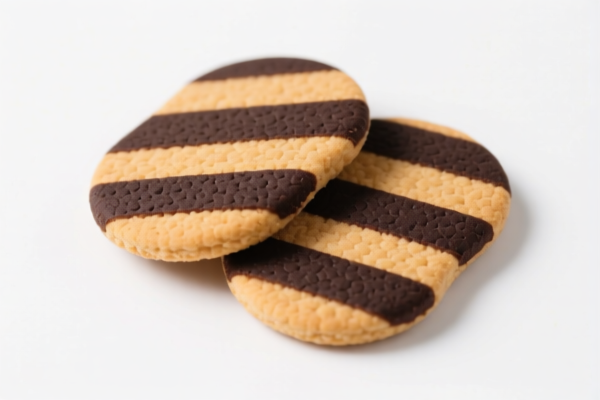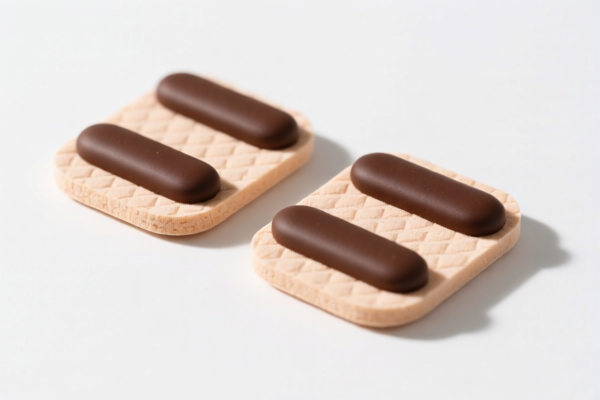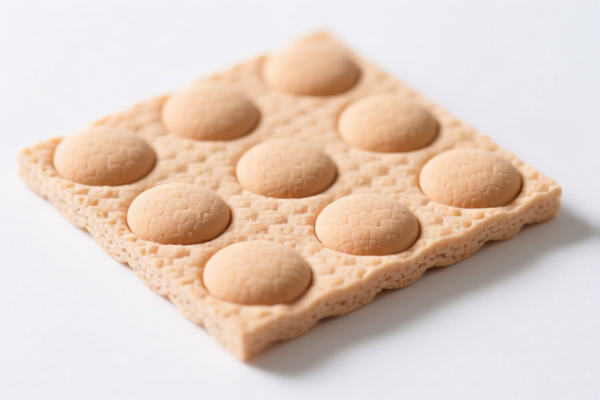Found 16 matching results
(CN → US)
| HS Code | Official Doc | Tariff Rate | Origin | Destination | Effective Date |
|---|---|---|---|---|---|
| 9619000500 | Doc | 42.5% | CN | US | 2025-05-12 |
| 9619001510 | Doc | 37.5% | CN | US | 2025-05-12 |
| 9612200000 | Doc | 41.0% | CN | US | 2025-05-12 |
| 4016100000 | Doc | 55.0% | CN | US | 2025-05-12 |
| 4016990500 | Doc | 40.9% | CN | US | 2025-05-12 |
| 4014905000 | Doc | 34.2% | CN | US | 2025-05-12 |
| 3926901000 | Doc | 40.9% | CN | US | 2025-05-12 |
| 3924104000 | Doc | 33.4% | CN | US | 2025-05-12 |
| 3924905650 | Doc | 40.9% | CN | US | 2025-05-12 |
| 4820102010 | Doc | 55.0% | CN | US | 2025-05-12 |
| 4820102020 | Doc | 55.0% | CN | US | 2025-05-12 |
| 4823901000 | Doc | 55.0% | CN | US | 2025-05-12 |
| 4823907000 | Doc | 55.0% | CN | US | 2025-05-12 |
| 6304111000 | Doc | 49.5% | CN | US | 2025-05-12 |
| 6304112000 | Doc | 36.5% | CN | US | 2025-05-12 |
| 9404909670 | Doc | 37.3% | CN | US | 2025-05-12 |




Pad
A “pad” is a broad term referring to a flat, usually relatively thin, object used for various purposes involving cushioning, writing, or supporting surfaces. The specific characteristics and applications of a pad depend heavily on its material composition.
Materials
Pads are constructed from a diverse range of materials, influencing their properties and intended use:
- Paper: Commonly used for writing, drawing, and note-taking. Different paper weights and finishes exist (e.g., lined, unlined, sketch, watercolor).
- Foam: Offers cushioning and impact absorption. Types include polyurethane foam, memory foam, and latex foam.
- Cloth: Provides a soft, absorbent surface, often used for cleaning, polishing, or as a writing surface. Microfiber is a common choice.
- Silicone: Durable, heat-resistant, and non-slip, used for mousepads, cookware protection, and crafting.
- Rubber: Offers grip and shock absorption, frequently used for mousepads and as protective layers.
- Gel: Provides ergonomic support and cushioning, often found in wrist rests and seat pads.
- Plastic: Used for protective pads, crafting, and as a base for writing or drawing.
- Metal: Used for specialized applications requiring rigidity and heat dissipation (e.g., thermal pads for electronics).
Purpose & Function
The core function of a pad is to provide a specific surface characteristic:
- Writing/Drawing: Offers a smooth, consistent surface for pen, pencil, or other artistic tools.
- Cushioning/Protection: Absorbs impact, reduces pressure, and safeguards underlying surfaces.
- Support: Provides a stable base for objects or body parts.
- Absorption: Soaks up liquids or debris.
- Polishing/Cleaning: Applies or distributes cleaning agents or provides a friction surface for polishing.
Usage Scenarios
- Office/School: Writing pads for note-taking, sketching, and brainstorming.
- Art/Design: Sketchbooks, drawing pads, watercolor pads for creating artwork.
- Computing: Mousepads for smooth cursor control and protection of desk surfaces.
- Ergonomics: Wrist rests to reduce strain during computer use.
- Household: Cleaning pads for scrubbing surfaces, polishing furniture.
- Crafting: Cutting mats to protect work surfaces, quilting pads for fabric projects.
- Electronics: Thermal pads to dissipate heat from components.
- Medical: Absorbent pads for wound care or incontinence.
- Sports/Fitness: Yoga mats for exercise, protective pads for sports equipment.
Common Types
- Writing Pads/Notepads: Typically paper-based, available in various sizes and formats (e.g., spiral-bound, glued, legal pads).
- Sketchbooks: Paper-based with higher paper quality, often with thicker covers and binding for durability.
- Mousepads: Typically rubber or silicone-based, providing a smooth surface for mouse movement. Gel wrist rests are often integrated.
- Thermal Pads: Made from thermally conductive materials, used to transfer heat away from electronic components.
- Cleaning Pads: Often microfiber or abrasive materials, used for cleaning various surfaces.
- Yoga Mats: Typically made from PVC or rubber, providing a non-slip surface for yoga practice.
- Cutting Mats: Self-healing plastic mats used for crafting and cutting projects.
- Seat Pads: Foam or gel-filled pads for added comfort when sitting.
- Drum Pads (Electronic): Electronic musical instruments that trigger sounds when struck.
- Tablet/Laptop Pads: Cooling pads with fans to prevent overheating.
Based on the provided information, “pad” can refer to several types of articles. Here's a breakdown of relevant HS codes:
- 9619000500: This code covers Sanitary pads (towels) and tampons, diapers (napkins), diaper liners and similar articles, of any material: Of plastics. This includes sanitary pads made of plastic. The basic tariff is 5.0%, with an additional tariff of 7.5%, increasing to 30.0% after April 2, 2025, resulting in a total tariff of 42.5%.
- 9619001510: This code also covers Sanitary pads (towels) and tampons, diapers (napkins), diaper liners and similar articles, of any material: Of paper, cellulose wadding or webs of cellulose fibers Sanitary napkins and tampons. This specifically includes sanitary pads made of paper or cellulose materials. The basic tariff is 0.0%, with an additional tariff of 7.5%, increasing to 30.0% after April 2, 2025, resulting in a total tariff of 37.5%.
- 4016990500: This code covers Other articles of vulcanized rubber other than hard rubber: Other: Household articles not elsewhere specified or included. If the pad is made of vulcanized rubber and is a household article, this code may apply. The basic tariff is 3.4%, with an additional tariff of 7.5%, increasing to 30.0% after April 2, 2025, resulting in a total tariff of 40.9%.
- 6304111000: This code covers Other furnishing articles, excluding those of heading 9404: Bedspreads: Knitted or crocheted: Of cotton (362). If the pad is a knitted or crocheted bedspread made of cotton, this code may apply. The basic tariff is 12.0%, with an additional tariff of 7.5%, increasing to 30.0% after April 2, 2025, resulting in a total tariff of 49.5%.
- 3926901000: This code covers Other articles of plastics and articles of other materials of headings 3901 to 3914: Other: Buckets and pails. If the pad is a plastic bucket or pail, this code may apply. The basic tariff is 3.4%, with an additional tariff of 7.5%, increasing to 30.0% after April 2, 2025, resulting in a total tariff of 40.9%.
It is important to determine the material composition of the pad to select the correct HS code.
Customer Reviews
No reviews yet.